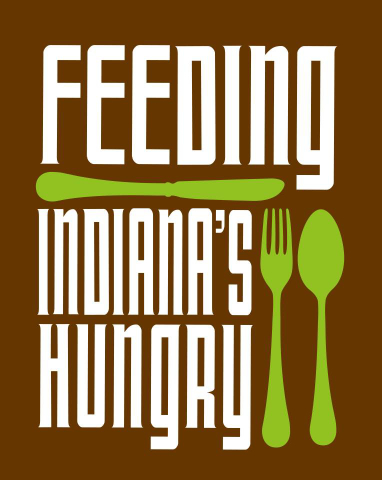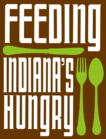New figures show more than one million Hoosiers are at risk of hunger, half ineligible for nutrition assistance programs.
INDIANAPOLIS, INDIANA April 27, 2012 — 1,050,030 Hoosiers—or 16.2 percent of the population—are food insecure, meaning that they don’t always know where they will find their next meal, according to new research released today by Feeding America, the nation’s largest hunger-relief organization.
The findings result from Feeding America’s “Map the Meal Gap” study, which provides estimates on the rate of food insecurity at the county and congressional district level for the entire nation. The eleven member food banks of Feeding Indiana’s Hungry are part of the Feeding America network.
“Food insecurity is one of the leading public health challenges in the United States due to the physical and mental damage and behavioral problems it may cause,” said Dr. Craig Gundersen, Associate Professor of Agricultural and Consumer Economics at the University of Illinois, a member of Feeding America’s Technical Advisory Group, and the lead researcher of the “Map the Meal Gap” study. “By ascertaining the extent and distribution of food insecurity at the county and congressional district level, we can better direct our resources to alleviating this serious problem.”
The total number of food insecure people in Indiana grew slightly from last year’s Map the Meal Gap data, although the percentage remained steady. What did change significantly is the proportion of food insecure Hoosiers unable to benefit from federal nutrition assistance programs, which is up 10 percent from the previous year. The new data indicates that now half of Indiana’s food insecure people have household incomes above the threshold for any food assistance programs, limiting the options for assistance available to them to only charitable programs. The threshold for these nutrition programs is 185 percent of the Federal Poverty Guidelines, or $41,348 a year for a family of four.
“No Hoosier should go hungry or try to survive without access to adequate amounts of healthy, nutritious food,” said Emily Weikert Bryant, Executive Director of Feeding Indiana’s Hungry. “The data shows that hunger exists in every county in Indiana, and that more frequently, those at risk are not just impoverished families, but those categorized as the ‘working poor’. This just reemphasizes the need for support of federal nutrition programs as well as support of nonprofit hunger relief organizations to ensure that all income levels of our food insecure will continue to be served.”
The local trend is similar what is being seen at the national level, according to the research. Overall, the U.S. Department of Agriculture reported that the national food insecurity rate remained relatively unchanged from last year at 16.1 percent in 2010 – or nearly 49 million people nationwide.
The data also shows:
- 41 percent of food insecure Hoosiers have income levels below 130 percent of the Federal Poverty Guidelines.
- Food insecurity rates by county range from 9.9 percent in Hamilton County (25,790 individuals) to 19 in Fayette County (4,640 individuals).
- 66 percent of the food insecure individuals in Hamilton County live above 185 percent of FPG and are ineligible for federal programs like SNAP, commodity food, Free & Reduced Lunch, and WIC.
- 58 percent of the food insecure individuals in Monroe County live below 130 of FPG.
This is the second year that Feeding America has conducted the “Map the Meal Gap” study. The findings of “Map the Meal Gap” are based on statistics collected by the U.S. Department of Agriculture, the U.S. Census Bureau, the U.S. Bureau of Labor Statistics and food price data and analysis provided by The Nielsen Company (NYSE: NLSN), a global information and measurement company providing insights into what consumers watch and buy. The study was supported by the Howard G. Buffett Foundation and Nielsen.
“Map the Meal Gap” provides critical information—food insecurity rates for each county and congressional district. Prior to the study’s first release in March 2011, food insecurity data was only available at the state level in the U.S. Department of Agriculture’s annual report. The study further analyzes each county’s food insecure population to determine their income eligibility for federal nutrition assistance, and also provides meal cost estimates for every county in the nation. This data has the potential to redefine the way service providers and policy makers address areas of need.



